For a writer, there's just about nothing better than finishing a book and meeting your deadline. Well, except maybe seeing it on the shelves. And getting good reviews. Winning awards...and earning out, selling the foreign rights, multiple printings...
NEW TITLES BY OUR MEMBERS:
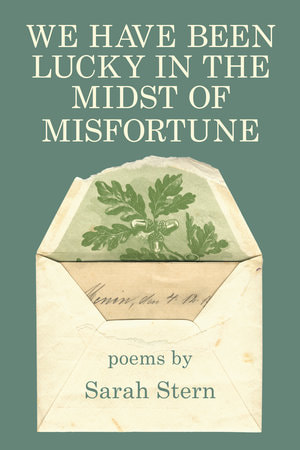
One way we address a great grief is to embrace the “before it” and the “after it,” taking care to only lightly palpate the wound itself. This is the technique Sarah Stern uses in the title sequence of her book We Have Been Lucky in the Midst of Misfortune, an exploration of what it means to be a German Jew before WWII or the descendant of German Jews. There are 11 poems in this sequence—some prose poems, some “found” bits, some free verse. Through an old family photo, we meet the dramatis personae, which includes the narrator’s grandfather and his nine siblings. This count excludes two sibs that died in infancy and one that ran off with a Gentile. The narrator, in Germany with present-day hosts, sits at table in Horb am Neckar outside the Black Forest watching the swans. She has, as we see from the next two poems, translations of letters her grandfather, Corporal Julius Pressburger, wrote to the mayor of what was then an independent community, Rexingen, now part of the municipality of Horb. Don’t let these details slip by you. The ways that time and war shape language and geography run parallel to the way that the human soul transmigrates; and they shape the identity of the beings that are geboren and gestorben (38) there.
Before the war there was a cafe in Horb,
Down the hill from Rexingen.
You could sit and talk there. (“Cafe Levi”, 52)
Like so many German Jews, Corporal Pressburger was decorated in World War I but arrested on the verge of World War II. Like my neighbor’s grandfather, he did a stint in Dachau back when it really was “just” a work camp. He immigrated to the USA after his release. His brother Isaak, we already know, “didn’t make it out.” (37) Yet there is healing—it is delayed, distant, and translated—but it is healing nonetheless:
Yes, we did, late night
the Christmas markets not far
Einstein Kaffee near. (“Making Love in Berlin”, 54)
Another notable sequence in this book is “The Little Room.” In these six poems, Stern’s narrator invites us into therapy with an analysand who, it is revealed early on, truly has some issues to address. In the first poem of the sequence, “Where the Stories Begin,” the patient introduces us to the analyst:
You wear thin ties, gray pants
and listen like no one has ever listened. (93)
And then she confesses:
It does not take long
for me to love you. (93)
In “The Clearing,” the patient identifies the analyst with Mister Rogers (“I wanted Mister Rogers to be my father”) (94), which is as disquieting in its own way as was her love at first sight. From love to daughterhood…but wait! By the next poem, “Album,” things get even more unheimlich:
Two inches from my face
That space between us softens.
You move back in your chair.
The session begins. (95)
This could be the famous B&W of Marie Bonaparte photographing Freud. In “The Stutter,” our patient waxes mystical over the connections between the analyst’s stutter and her own “new teeth pushing through the gum,” the words they share with one another. (96) There is of course, only one way for this to end, with the patient’s disillusionment. In “Around Town,” the patient catches sight of the analyst in “a cafe with another woman” (97) and the spell is broken. She is betrayed:
I get angry at the thought
that you aren’t always in
the little room thinking of me (97)
In “The Fight,” she ends it, she leaves “before the session is over,” going where “the cool air feels good” on her face. (98) But she has also abandoned the pressing issues she set out initially to address. This patient wants vengeance, tepid though it may be:
I hope you stay
in the little room
until my hour is over. (98)
Take that, Mr. Rogers!
Though I have focused on just two sequences, this collection is replete with haunting and thought-provoking poetry.
Sarah Stern is the author of But Today is Different (2014) and Another Word for Love, a chapbook, 2011) from which her poem “The Owl” was featured on Verse Daily. She has been awarded the Bronx Council on the Arts’ BRIO (Bronx Rewards Its Own) Award for Poetry—a monetary award of several thousand dollars—five times.
About the reviewer: Judy Swann is a poet and essayist who publishes fairly frequently, both in print and online. Her book of poetry, Fool (Kelsay Books) was released in December, 2018. Her book of essays on the cartoon superhero Stickman (John Young) will appear in March, 2019.
Before the war there was a cafe in Horb,
Down the hill from Rexingen.
You could sit and talk there. (“Cafe Levi”, 52)
Like so many German Jews, Corporal Pressburger was decorated in World War I but arrested on the verge of World War II. Like my neighbor’s grandfather, he did a stint in Dachau back when it really was “just” a work camp. He immigrated to the USA after his release. His brother Isaak, we already know, “didn’t make it out.” (37) Yet there is healing—it is delayed, distant, and translated—but it is healing nonetheless:
Yes, we did, late night
the Christmas markets not far
Einstein Kaffee near. (“Making Love in Berlin”, 54)
Another notable sequence in this book is “The Little Room.” In these six poems, Stern’s narrator invites us into therapy with an analysand who, it is revealed early on, truly has some issues to address. In the first poem of the sequence, “Where the Stories Begin,” the patient introduces us to the analyst:
You wear thin ties, gray pants
and listen like no one has ever listened. (93)
And then she confesses:
It does not take long
for me to love you. (93)
In “The Clearing,” the patient identifies the analyst with Mister Rogers (“I wanted Mister Rogers to be my father”) (94), which is as disquieting in its own way as was her love at first sight. From love to daughterhood…but wait! By the next poem, “Album,” things get even more unheimlich:
Two inches from my face
That space between us softens.
You move back in your chair.
The session begins. (95)
This could be the famous B&W of Marie Bonaparte photographing Freud. In “The Stutter,” our patient waxes mystical over the connections between the analyst’s stutter and her own “new teeth pushing through the gum,” the words they share with one another. (96) There is of course, only one way for this to end, with the patient’s disillusionment. In “Around Town,” the patient catches sight of the analyst in “a cafe with another woman” (97) and the spell is broken. She is betrayed:
I get angry at the thought
that you aren’t always in
the little room thinking of me (97)
In “The Fight,” she ends it, she leaves “before the session is over,” going where “the cool air feels good” on her face. (98) But she has also abandoned the pressing issues she set out initially to address. This patient wants vengeance, tepid though it may be:
I hope you stay
in the little room
until my hour is over. (98)
Take that, Mr. Rogers!
Though I have focused on just two sequences, this collection is replete with haunting and thought-provoking poetry.
Sarah Stern is the author of But Today is Different (2014) and Another Word for Love, a chapbook, 2011) from which her poem “The Owl” was featured on Verse Daily. She has been awarded the Bronx Council on the Arts’ BRIO (Bronx Rewards Its Own) Award for Poetry—a monetary award of several thousand dollars—five times.
About the reviewer: Judy Swann is a poet and essayist who publishes fairly frequently, both in print and online. Her book of poetry, Fool (Kelsay Books) was released in December, 2018. Her book of essays on the cartoon superhero Stickman (John Young) will appear in March, 2019.
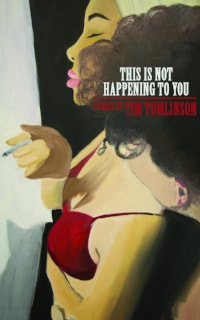
THIS IS NOT HAPPENING TO YOU ranges with imaginative ease across locales and characters – a wealthy socialite in the Hamptons, a bitter, old Korean War vet in the suburbs, a 30-something New Orleans barfly with delusions of grandeur, and many others. Quickly sketched but fully realized, these figures stumble into extreme (yet somehow plausible) situations that expose their all-too-human delusions. Above all, Tomlinson focuses on the cruel and inventive ways that desire makes each of us in turn predator and prey, martyr and buffoon. In the hands of a less assured talent these stories would offer only a grim ledger of sin and stupidity, yet Tomlinson leavens them with humor that is by turns wry, searing, and tender, although never sentimental. Sui generis as Tomlinson’s sensibility is, it draws on one of the richest traditions in American Letters, the New York state of mind. By turns sardonic, irreverent, bold, psychologically astute and always engaging, Tomlinson has placed himself in the company of celebrated New York writers past, a pantheon that includes Hart Crane, Anatole Broyard, Dorothy Parker, and above all, Leonard Michaels, who would have recognized a kindred spirit in the magician of TINHTY. While the Manhattan that inspired generations of artists has all but disappeared, in Tomlinson’s stories we encounter a late florescence of a unique sensibility, ‘Made in New York’ stamped on every page. --Robert Anasi, author of The Gloves: A Boxing Chronicle, and The Last Bohemia: Scenes from the Life of Williamsburg, Brooklyn.
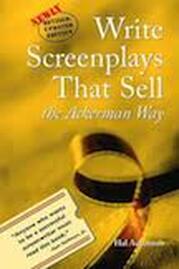
You don’t have to attend film school to take a screenwriting course with the master teacher in the field – it’s all in Write Screenplays That Sell: The Hal Ackerman Way. Hal Ackerman offers a treasure trove of information on the writing of quality, marketable screenplays by teaching the art of story structure, substance and style. Over the last quarter century, dozens of screenplays written in his classes have been sold and several have become films, including ones starring Tom Hanks (directed by Steven Spielberg), Gwyneth Paltrow, Christian Bale, Hilary Swank and Diane Lane. They have won accolades in many prestigious contests and have been the gateway scripts to writing jobs in feature films and TV including HBO, Showtime, TNT, OWN, ABC, NBC, CBS, Disney, and more. With this book every professional writer gets a lifetime collaborator and every aspiring writer has a teacher in residence on his or her shelf.
An accomplished screenwriter, playwright, novelist, author and educator, Hal Ackerman joined the faculty at the acclaimed UCLA School of Theatre, Film and Television in 1985. He taught in the screenwriting program for thirty years, the last decade as Co-Area head. Ackerman has nurtured, mentored and collaborated with hundreds of aspiring screenwriting students, many of whom have gone on to successful, award-winning careers in the industry. Hal Ackerman is emeritus Co-Area Head of the UCLA Screenwriting program. His book has guided the careers of scores of successful writers. He has sold original material to all the major studio and networks. He has had numerous short stories published in literary journals. Belle & Melinda was selected by Robert Olen Butler as the World’s Best Short Short story for Southeast Review. TESTOSTERONE: How Prostate Cancer Made A Man of Me won the William Saroyan Centennial Prize for drama. Under its new title, PRICK, it won BEST SCRIPT at the 2011 United Solo Festival. Ackerman’s Roof Garden, published by Kindle, won the Warren Adler 2008 award for fiction. Alfalfa was included in the anthology I Wanna Be Sedated ... 30 Writers on Parenting Teenagers. He has also published two successful novels in a detective series about an aging counterculture P.I. Stein, Stoned, which won the Lovey award for best first novel in 2010. It was followed in 2011 by Stein, Stung.
An accomplished screenwriter, playwright, novelist, author and educator, Hal Ackerman joined the faculty at the acclaimed UCLA School of Theatre, Film and Television in 1985. He taught in the screenwriting program for thirty years, the last decade as Co-Area head. Ackerman has nurtured, mentored and collaborated with hundreds of aspiring screenwriting students, many of whom have gone on to successful, award-winning careers in the industry. Hal Ackerman is emeritus Co-Area Head of the UCLA Screenwriting program. His book has guided the careers of scores of successful writers. He has sold original material to all the major studio and networks. He has had numerous short stories published in literary journals. Belle & Melinda was selected by Robert Olen Butler as the World’s Best Short Short story for Southeast Review. TESTOSTERONE: How Prostate Cancer Made A Man of Me won the William Saroyan Centennial Prize for drama. Under its new title, PRICK, it won BEST SCRIPT at the 2011 United Solo Festival. Ackerman’s Roof Garden, published by Kindle, won the Warren Adler 2008 award for fiction. Alfalfa was included in the anthology I Wanna Be Sedated ... 30 Writers on Parenting Teenagers. He has also published two successful novels in a detective series about an aging counterculture P.I. Stein, Stoned, which won the Lovey award for best first novel in 2010. It was followed in 2011 by Stein, Stung.
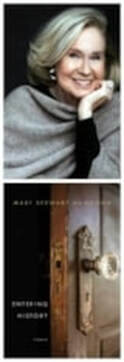
In her long-awaited second volume, Mary Stewart Hammond chronicles a long marriage with sharp wit, dark irony, and poignancy. As James Merrill says of Hammond’s poems, they “brim with what the whole world knows.” Entering History opens on a middle-aged couple, modern-day travelers in an ancient setting. The collection follows their relationship through time and place, combining the personal and the historical in stories of the family—siblings, a daughter, and the very different marriage of the poet’s parents. The marriage poems share the intimacy, erotic playfulness, irritations, worries, and angers that are part of an enduring love and a long marriage. In “Portrait of My Husband Reading Henry James,” the poet paints her husband using syntax and language that evoke James’s. In “Venasque,” the wintry village, perched on the edge of a cliff, serves as a metaphor for the existential crisis facing the couple. “Lines composed at Beaufort, South Carolina, a few miles above Parris Island,” about one of the poet’s brothers, moves back and forth between the Civil War and the preparations of troops for today’s wars. In “Jacob and Esau with Sister,” two brothers, in a transaction as old as oral history, highlight wars’ consequences in the twenty-first century. “Anniversary” is a heartbreaking elegy for a third brother who kills himself. Hammond reaches into the past and present of the American family, closing Entering History where it began, with the couple in bed, now older, harkening back to the bed they shared when they were newlyweds. These powerful, beautifully crafted, lyrical narratives give depth to an examination of life—its joys, sorrows, laughter, and tragedies.
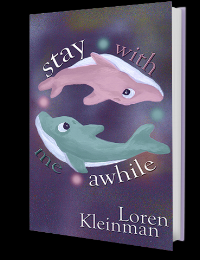
Stay With Me Awhile, by Loren Kleinman
Kleinman, a recipient of the Spire Press Poetry Prize and a Pushcart Prize nominee, brings longing and love to the fore in her latest collection. This collection of prose poems demonstrates a step change in how contemporary American poetry can be written, and ultimately consumed. Poems such as I Let Him, Half-finished Garden, and The Heart, a Lost Child, show how the author grows on the page, opening herself up to her audience – offering her inner workings to demonstrate how raw love can be. Loren is a faculty member at New York Writers Workshop, a writer for the Huffington Post, columnist for indiereader.com, and co-founder of National Translation Month – where she celebrates poetry in translation from around the world. Jessica Kristie, founder of Winter Goose Publishing, said: “Loren is a timeless point. She speaks of this age, and the next, never failing to shine a light on the stark, dark, revelations that many miss in the day to day of living. “We're delighted to be publishing Stay With Me Awhile, and we have no doubts that it will form a key part of Loren's legacy as one of America's finest young poets.” Kleinman's work continues to receive critical acclaim from audiences and fellow writers alike.
Kleinman, a recipient of the Spire Press Poetry Prize and a Pushcart Prize nominee, brings longing and love to the fore in her latest collection. This collection of prose poems demonstrates a step change in how contemporary American poetry can be written, and ultimately consumed. Poems such as I Let Him, Half-finished Garden, and The Heart, a Lost Child, show how the author grows on the page, opening herself up to her audience – offering her inner workings to demonstrate how raw love can be. Loren is a faculty member at New York Writers Workshop, a writer for the Huffington Post, columnist for indiereader.com, and co-founder of National Translation Month – where she celebrates poetry in translation from around the world. Jessica Kristie, founder of Winter Goose Publishing, said: “Loren is a timeless point. She speaks of this age, and the next, never failing to shine a light on the stark, dark, revelations that many miss in the day to day of living. “We're delighted to be publishing Stay With Me Awhile, and we have no doubts that it will form a key part of Loren's legacy as one of America's finest young poets.” Kleinman's work continues to receive critical acclaim from audiences and fellow writers alike.
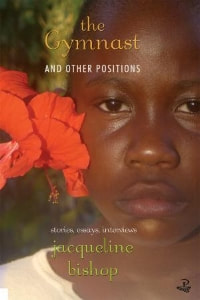
The Gymnast: And Other Positions, by Jacqueline Bishop
Beginning with the promptings of the transgressively erotic title story, Jacqueline Bishop came to see the hybrid format of this book, with its mix of short stories, essays and interviews could begin to encompass her desire to see where she had arrived at in a creative career that encompassed being published as a novelist, poet, critic and exhibited as an artist. How did these sundry positions connect together? What aspects of both conscious intention and unconscious, interior motivations did they reveal? The stories, none more than a few pages long, can be read at several levels. The mentor who teaches the child gymnast a contortionist’s erotic positions, the adoptive mother who shoots down ex-partner and adopted child when the former debauches the latter as the subject of pornographic photographs; the relationship between tattooist and the woman who offers her naked body for decoration are all sharply and persuasively realized as short fictions, but they also hint at a writer’s interior dialogue and can be read as parables about the relationship between the free imagination and the controlling and even potentially betraying power of art. The essays explore more conscious areas of expression. They deal with the experiences of maternal separation, family histories and mythologies, the search for grounding in the life of a Jamaican grandmother, the relationship with a male writing mentor, travel to Morocco, the inspiration of the writing lives of Jamaicans Claude McKay and Roger Mais and how 9/11 showed her how deeply she had become a New Yorker. The interviews, which investigate sometimes her writing, sometimes her art, and occasionally both, provide context for the stories and the essays. They are at their most revealing when interviewers ask Jacqueline Bishop questions she hasn’t asked herself.
Jacqueline Bishop was born and raised in Kingston, Jamaica. She is the founding editor of Calabash: A Journal of Caribbean Arts & Letters and writes regularly for The Huffington Post and The Caribbean Writer, Crab Orchard Review, Macomere, Renaissance Noire and Wasafiri amongst other journals. Her other works include The River's Song, a novel, and two collections of poetry: Fauna and Snapshots from Istanbul.
Beginning with the promptings of the transgressively erotic title story, Jacqueline Bishop came to see the hybrid format of this book, with its mix of short stories, essays and interviews could begin to encompass her desire to see where she had arrived at in a creative career that encompassed being published as a novelist, poet, critic and exhibited as an artist. How did these sundry positions connect together? What aspects of both conscious intention and unconscious, interior motivations did they reveal? The stories, none more than a few pages long, can be read at several levels. The mentor who teaches the child gymnast a contortionist’s erotic positions, the adoptive mother who shoots down ex-partner and adopted child when the former debauches the latter as the subject of pornographic photographs; the relationship between tattooist and the woman who offers her naked body for decoration are all sharply and persuasively realized as short fictions, but they also hint at a writer’s interior dialogue and can be read as parables about the relationship between the free imagination and the controlling and even potentially betraying power of art. The essays explore more conscious areas of expression. They deal with the experiences of maternal separation, family histories and mythologies, the search for grounding in the life of a Jamaican grandmother, the relationship with a male writing mentor, travel to Morocco, the inspiration of the writing lives of Jamaicans Claude McKay and Roger Mais and how 9/11 showed her how deeply she had become a New Yorker. The interviews, which investigate sometimes her writing, sometimes her art, and occasionally both, provide context for the stories and the essays. They are at their most revealing when interviewers ask Jacqueline Bishop questions she hasn’t asked herself.
Jacqueline Bishop was born and raised in Kingston, Jamaica. She is the founding editor of Calabash: A Journal of Caribbean Arts & Letters and writes regularly for The Huffington Post and The Caribbean Writer, Crab Orchard Review, Macomere, Renaissance Noire and Wasafiri amongst other journals. Her other works include The River's Song, a novel, and two collections of poetry: Fauna and Snapshots from Istanbul.
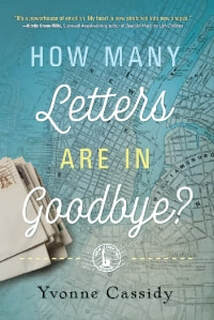
How Many Letters Are In Goodbye?, by Yvonne Cassidy
Seventeen-year-old Rhea Farrell carries the scars of a childhood accident in which she lost her arm. But she also carries scars that aren’t so visible—the loss of a mother she hardly remembers, the impact of her father’s drinking and her confusion and pain around accepting her sexuality.
When Rhea runs away, she turns to the person she always wished she could confide in—her mother. And just like she used to do as a little girl, Rhea starts to write her letters—to tell her things she can’t tell anyone else, to share her fears, to ask for help. Rhea’s journey on the streets of New York brings her deeper into her mother’s past where she uncovers buried family secrets. And as she finds out more about the woman her mother truly was, Rhea also discovers just what kind of woman she wants to be.
Advance Praise:
“It’s a powerhouse of emotion. My heart is now stretched into new shapes.”
—Kirstin Cronn-Mills, Stonewall Award-winning author of Beautiful Music for Ugly Children
“Heavy and intense, this book will make readers confront their own senses of identity.”—Kirkus Reviews
“A heartbreaking story about the challenges of trusting, healing, and saying goodbye.”--School Library Journal
Seventeen-year-old Rhea Farrell carries the scars of a childhood accident in which she lost her arm. But she also carries scars that aren’t so visible—the loss of a mother she hardly remembers, the impact of her father’s drinking and her confusion and pain around accepting her sexuality.
When Rhea runs away, she turns to the person she always wished she could confide in—her mother. And just like she used to do as a little girl, Rhea starts to write her letters—to tell her things she can’t tell anyone else, to share her fears, to ask for help. Rhea’s journey on the streets of New York brings her deeper into her mother’s past where she uncovers buried family secrets. And as she finds out more about the woman her mother truly was, Rhea also discovers just what kind of woman she wants to be.
Advance Praise:
“It’s a powerhouse of emotion. My heart is now stretched into new shapes.”
—Kirstin Cronn-Mills, Stonewall Award-winning author of Beautiful Music for Ugly Children
“Heavy and intense, this book will make readers confront their own senses of identity.”—Kirkus Reviews
“A heartbreaking story about the challenges of trusting, healing, and saying goodbye.”--School Library Journal
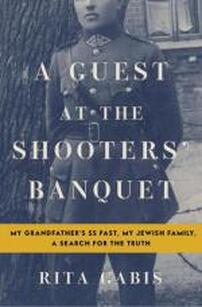
A Guest at the Shooters’ Banquet: My Grandfather’s SS Past, My Jewish Family, A Search for the Truth, by Rita Gabis
Award-winning poet and prose writer Rita Gabis was born into a family of Eastern European Jews on her father’s side and first-generation Lithuanian Catholics on her mother’s side. Both sides of her family were beloved to her. As a child, Gabis was told the story of her Lithuanian Catholic grandmother’s capture by the Soviets during Stalin’s massive purges in the spring of 1941, of her torture and years spent in several Siberian gulags. Five years ago, she learned of another dimension to her family story, when she was blindsided by the discovery that between 1941 and 1943 her beloved maternal grandfather served as the chief of security police under the Gestapo in the Lithuanian town of Švenčionys. During the fall of 1941, eight thousand Jews were murdered over the course of three days in the nearby killing field of Poligon and the local Polish population was hunted down over the following year. Compelled to uncover the truth about her grandfather’s collaboration and learn as much as she could about her Lithuanian grandmother’s ordeal, Gabis embarked on a long journey of discovery, beginning at the Holocaust Museum in Washington, D.C. and propelling her across four countries where she conducted rare, dramatic interviews with survivors and witnesses to Soviet and German occupations, including members of her own extended family in Lithuania. The resulting scholarship and first-hand accounts fill the pages of her engrossing, lyrical memoir A Guest at the Shooters’ Banquet: My Grandfather’s SS Past, My Jewish Family, A Search for the Truth (Bloomsbury 2015).
Engrossing… An eloquent testimony to the war’s enduring, violent impact.” --Kirkus Reviews (starred review)
“Intense, moving…a deeply personal and important addition to Holocaust literature.”--Booklist (starred review)
“Heartfelt…Gabis paints an engrossing portrait of the snake-pit of ethnic animosities in wartime Lithuania, and of the intimate horrors of the Holocaust.”--Publishers Weekly
“In this intricate and intimate journey Rita Gabis brings macrocosmic Holocaust horror into the microcosm of our dining rooms, kitchens, and bedrooms—a noble feat, one you will not soon forget.” --New York Journal of Books
Award-winning poet and prose writer Rita Gabis was born into a family of Eastern European Jews on her father’s side and first-generation Lithuanian Catholics on her mother’s side. Both sides of her family were beloved to her. As a child, Gabis was told the story of her Lithuanian Catholic grandmother’s capture by the Soviets during Stalin’s massive purges in the spring of 1941, of her torture and years spent in several Siberian gulags. Five years ago, she learned of another dimension to her family story, when she was blindsided by the discovery that between 1941 and 1943 her beloved maternal grandfather served as the chief of security police under the Gestapo in the Lithuanian town of Švenčionys. During the fall of 1941, eight thousand Jews were murdered over the course of three days in the nearby killing field of Poligon and the local Polish population was hunted down over the following year. Compelled to uncover the truth about her grandfather’s collaboration and learn as much as she could about her Lithuanian grandmother’s ordeal, Gabis embarked on a long journey of discovery, beginning at the Holocaust Museum in Washington, D.C. and propelling her across four countries where she conducted rare, dramatic interviews with survivors and witnesses to Soviet and German occupations, including members of her own extended family in Lithuania. The resulting scholarship and first-hand accounts fill the pages of her engrossing, lyrical memoir A Guest at the Shooters’ Banquet: My Grandfather’s SS Past, My Jewish Family, A Search for the Truth (Bloomsbury 2015).
Engrossing… An eloquent testimony to the war’s enduring, violent impact.” --Kirkus Reviews (starred review)
“Intense, moving…a deeply personal and important addition to Holocaust literature.”--Booklist (starred review)
“Heartfelt…Gabis paints an engrossing portrait of the snake-pit of ethnic animosities in wartime Lithuania, and of the intimate horrors of the Holocaust.”--Publishers Weekly
“In this intricate and intimate journey Rita Gabis brings macrocosmic Holocaust horror into the microcosm of our dining rooms, kitchens, and bedrooms—a noble feat, one you will not soon forget.” --New York Journal of Books
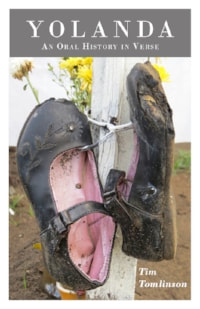
Yolanda: An Oral History in Verse, by Tim Tomlinson
Each work in Tomlinson’s Yolanda stands like a bare tree in a devastated landscape, starkly beautiful. At once oral history and found poem, Tomlinson’s document retains the shock and numbness of those who survived while whittling their accounts to profound poems of dignity amid the anguish after disaster. –Robin Hemley, A Field Guide for Immersion Writing: Memoir, Journalism, and Travel
In Yolanda, the reader lands in the eye of the storm, then is pulled even closer into the grit, the grief, the very hearts of Super-Typhoon Yolanda’s survivors. In twenty-seven poems fashioned from first person accounts, Tomlinson salvages from the dark wreckage, then polishes to a fierce shine as only a poet can, these narratives of courage, faith, the goodness of strangers, the bonds of family and friendship, and ultimately, the defiant hope of the Filipino people. As William Carlos Williams has said, “It is difficult / to get the news from poems / yet men die miserably every day / for lack /of what is found there.” Read this book: tread the deep waters, cry out, sing with the voices, grasp a hand, and live. -Angela Narciso Torres, Blood Orange
Each work in Tomlinson’s Yolanda stands like a bare tree in a devastated landscape, starkly beautiful. At once oral history and found poem, Tomlinson’s document retains the shock and numbness of those who survived while whittling their accounts to profound poems of dignity amid the anguish after disaster. –Robin Hemley, A Field Guide for Immersion Writing: Memoir, Journalism, and Travel
In Yolanda, the reader lands in the eye of the storm, then is pulled even closer into the grit, the grief, the very hearts of Super-Typhoon Yolanda’s survivors. In twenty-seven poems fashioned from first person accounts, Tomlinson salvages from the dark wreckage, then polishes to a fierce shine as only a poet can, these narratives of courage, faith, the goodness of strangers, the bonds of family and friendship, and ultimately, the defiant hope of the Filipino people. As William Carlos Williams has said, “It is difficult / to get the news from poems / yet men die miserably every day / for lack /of what is found there.” Read this book: tread the deep waters, cry out, sing with the voices, grasp a hand, and live. -Angela Narciso Torres, Blood Orange
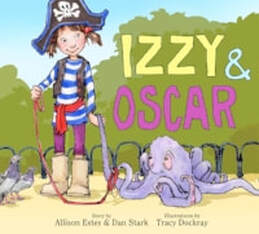
Izzy & Oscar*, by Allison Estes and Dan Stark, Illustrations by Tracy Dockray
Have you ever taught an octopus to roll over? It’s harder than it looks. Izzy has always wanted a pet. So when an adventurous octopus squiggles into town, Izzy decides to keep him. After all, a real pirate captain has to have a mascot. Oscar is not very good at going for walks or playing fetch. (Although he is amazing at hide and seek). And he’s definitely not like other pets…but he is just right for Izzy. Readers will be tickled by Izzy’s attempts to teach Oscar to behave like a dog, a parrot, a pony—and gratified by Izzy’s realization that in the end we love others for who they are…eight arms and all!
“This exciting story is full of rich vocabulary, beautiful pencil and dye illustrations, and belly-laugh humor that young children will love.” School Library Journal
"A goofy, good-natured story of a decidedly nontraditional pet."Publisher's Weekly
"A grand addition to any pet-themed read-aloud session."Kirkus
*An Accelerated Reader Quiz Selection
Release date: April 7, 2015 | Age Range: 4 - 8 years
Have you ever taught an octopus to roll over? It’s harder than it looks. Izzy has always wanted a pet. So when an adventurous octopus squiggles into town, Izzy decides to keep him. After all, a real pirate captain has to have a mascot. Oscar is not very good at going for walks or playing fetch. (Although he is amazing at hide and seek). And he’s definitely not like other pets…but he is just right for Izzy. Readers will be tickled by Izzy’s attempts to teach Oscar to behave like a dog, a parrot, a pony—and gratified by Izzy’s realization that in the end we love others for who they are…eight arms and all!
“This exciting story is full of rich vocabulary, beautiful pencil and dye illustrations, and belly-laugh humor that young children will love.” School Library Journal
"A goofy, good-natured story of a decidedly nontraditional pet."Publisher's Weekly
"A grand addition to any pet-themed read-aloud session."Kirkus
*An Accelerated Reader Quiz Selection
Release date: April 7, 2015 | Age Range: 4 - 8 years
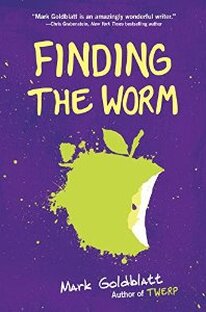
Finding the Worm, by Mark Goldblatt
It’s not a test unless you can fail. . . .Trouble always seems to find thirteen-year-old Julian Twerski. First it was a bullying incident, and now he’s been accused of vandalizing a painting. The principal doesn’t want to suspend him again, so instead, he asks Julian to write a 200-word essay on good citizenship. Julian writes 200 no’s instead, and so begins an epic struggle between Julian and his principal.Being falsely accused is bad enough, but outside of school, Julian’s dealing with even bigger issues. His friend Quentin has been really sick. How can life be fair when the nicest guy in your group has cancer? Julian’s faith and friendships are put to the test . . . and the stakes have never been higher.
Release date: February 10, 2015 | Age Range: 9 - 12 years | Grade Level: 4 - 7
It’s not a test unless you can fail. . . .Trouble always seems to find thirteen-year-old Julian Twerski. First it was a bullying incident, and now he’s been accused of vandalizing a painting. The principal doesn’t want to suspend him again, so instead, he asks Julian to write a 200-word essay on good citizenship. Julian writes 200 no’s instead, and so begins an epic struggle between Julian and his principal.Being falsely accused is bad enough, but outside of school, Julian’s dealing with even bigger issues. His friend Quentin has been really sick. How can life be fair when the nicest guy in your group has cancer? Julian’s faith and friendships are put to the test . . . and the stakes have never been higher.
Release date: February 10, 2015 | Age Range: 9 - 12 years | Grade Level: 4 - 7
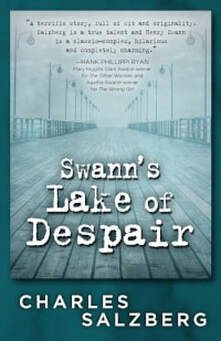
Swann's Lake of Despair, by Charles Salzberg
When rare photos, a scandalous diary, and a beautiful woman all go missing at once, the stage is set for three challenging cases for Henry Swann. It begins with an offer to partner up with his slovenly, unreliable frenemy, Goldblatt. The disbarred lawyer-turned-"facilitator" would provide the leads and muscle, while Swann would do all the fancy footwork. A lost diary by a free-loving Jazz Age flapper is worth enough to someone that Swann takes a beat down on an abandoned boardwalk. Pilfered photos of Marilyn Monroe propel him deep into the past of an alcoholic shutterbug, his wife; and he's hired to search for a lonely writer's runaway girlfriend. The cases converge and collide in a finale that lifts the curtain on crucial, deadly facts of life for everyone, including Swann himself.
Release Date: October 22, 2014
When rare photos, a scandalous diary, and a beautiful woman all go missing at once, the stage is set for three challenging cases for Henry Swann. It begins with an offer to partner up with his slovenly, unreliable frenemy, Goldblatt. The disbarred lawyer-turned-"facilitator" would provide the leads and muscle, while Swann would do all the fancy footwork. A lost diary by a free-loving Jazz Age flapper is worth enough to someone that Swann takes a beat down on an abandoned boardwalk. Pilfered photos of Marilyn Monroe propel him deep into the past of an alcoholic shutterbug, his wife; and he's hired to search for a lonely writer's runaway girlfriend. The cases converge and collide in a finale that lifts the curtain on crucial, deadly facts of life for everyone, including Swann himself.
Release Date: October 22, 2014
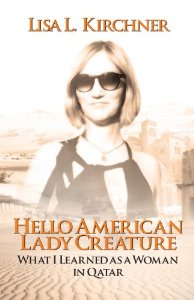
Hello, American Lady Creature: What I Learned as a Woman in Qatar, by Lisa L. Kirchner
Lisa Kirchner hoped moving to Qatar would change everything. Until it did.
Unlike the typical post-divorce travel narrative, in this beautifully wrought, darkly humorous memoir, journalist Lisa L. Kirchner tells the story of the person left behind. "What better place to redefine her womanhood than in the Middle East?" Ophira Eisenberg (NPR's Ask Me Another host and Screw Everyone author) wryly observes, "Brimming with wit, brave reflections, and loads of laughs."
Publication Date: May 31, 2014
Lisa Kirchner hoped moving to Qatar would change everything. Until it did.
Unlike the typical post-divorce travel narrative, in this beautifully wrought, darkly humorous memoir, journalist Lisa L. Kirchner tells the story of the person left behind. "What better place to redefine her womanhood than in the Middle East?" Ophira Eisenberg (NPR's Ask Me Another host and Screw Everyone author) wryly observes, "Brimming with wit, brave reflections, and loads of laughs."
Publication Date: May 31, 2014
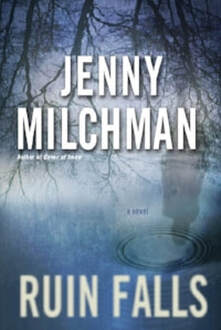
Ruin Falls, by Jenny Milchman
In a suspenseful follow-up to her critically acclaimed Cover of Snow, Jenny Milchman ratchets up the tension with this edge-of-your-seat story of a mother determined to find her missing children. Liz Daniels has every reason to be happy about setting off on a rare family vacation. Instead, she feels uneasy. Her children, eight-year-old Reid and six-year-old Ally, have met their paternal grandparents only a handful of times. But Liz’s husband, Paul, has decided that, despite a strained relationship with his parents, they should visit the farm in western New York where he spent his childhood.On their way to the farm, the family stops at a hotel for the night. In the morning, Ally and Reed are nowhere to be found. Blind panic slides into ice-cold terror as the hours tick by without anyone finding a trace of the kids—but in a sudden, gut-wrenching instant, Liz realizes that it was no stranger who slipped into the hotel room that night. Someone she trusted completely has betrayed her. From her in-laws’ unwelcoming farmhouse to the deep woods of her own hometown, Liz follows the threads of a terrible secret to uncover a hidden world created from dreams and haunted by nightmares.
Publication Date: April 22, 2014
In a suspenseful follow-up to her critically acclaimed Cover of Snow, Jenny Milchman ratchets up the tension with this edge-of-your-seat story of a mother determined to find her missing children. Liz Daniels has every reason to be happy about setting off on a rare family vacation. Instead, she feels uneasy. Her children, eight-year-old Reid and six-year-old Ally, have met their paternal grandparents only a handful of times. But Liz’s husband, Paul, has decided that, despite a strained relationship with his parents, they should visit the farm in western New York where he spent his childhood.On their way to the farm, the family stops at a hotel for the night. In the morning, Ally and Reed are nowhere to be found. Blind panic slides into ice-cold terror as the hours tick by without anyone finding a trace of the kids—but in a sudden, gut-wrenching instant, Liz realizes that it was no stranger who slipped into the hotel room that night. Someone she trusted completely has betrayed her. From her in-laws’ unwelcoming farmhouse to the deep woods of her own hometown, Liz follows the threads of a terrible secret to uncover a hidden world created from dreams and haunted by nightmares.
Publication Date: April 22, 2014
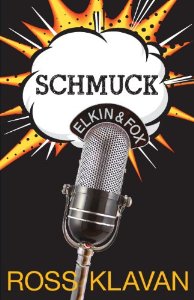
Schmuck, by Ross Klavan
1969. In advertising, there are mad men. On radio, there are funny men. In 1960s New York, radio is king, and Elkin and Fox are the hottest morning team in town. Jerry Elkin is the funny half—a genius at dialects and double-talk, zingers and zany characters. Sinatra flies him to Vegas on his private plane, and Rocky Graziano drinks with him (and punches him). But Jerry’s life? That’s no laughing matter. Secretly, he seethes at his straight-man partner, Ted Fox, a handsome rake who’d rather shtup a secretary in the studio than entertain TV offers, a guy who makes Jerry feel less a star and more a schmuck. And that’s before Jerry ever hears the name Sari Rosenbloom. The stunning eighteen-year-old is a mystical American dream, irresistible to men—and her most obsessed admirer is Jake, Jerry’s son. Sari’s father, Max Rosenbloom works in “salvage”—in other words, he burns down factories, sells poisoned pajamas to Chinese children and sometimes buries his enemies in cement. If Jake doesn’t stop going after his princess daughter, Max might make Jerry’s son, Jerry’s career and Jerry’s whole post-war world disappear right off the dial…. Schmuck. A raucous, wild novel of love, war, rioting and radio that’s as funny as a heart attack and as serious as hell.
Publication Date: January 21, 2014
In her long-awaited second volume, Mary Stewart Hammond chronicles a long marriage with sharp wit, dark irony, and poignancy. As James Merrill says of Hammond’s poems, they “brim with what the whole world knows.” Entering History opens on a middle-aged couple, modern-day travelers in an ancient setting. The collection follows their relationship through time and place, combining the personal and the historical in stories of the family—siblings, a daughter, and the very different marriage of the poet’s parents. The marriage poems share the intimacy, erotic playfulness, irritations, worries, and angers that are part of an enduring love and a long marriage. In “Portrait of My Husband Reading Henry James,” the poet paints her husband using syntax and language that evoke James’s. In “Venasque,” the wintry village, perched on the edge of a cliff, serves as a metaphor for the existential crisis facing the couple. “Lines composed at Beaufort, South Carolina, a few miles above Parris Island,” about one of the poet’s brothers, moves back and forth between the Civil War and the preparations of troops for today’s wars. In “Jacob and Esau with Sister,” two brothers, in a transaction as old as oral history, highlight wars’ consequences in the twenty-first century. “Anniversary” is a heartbreaking elegy for a third brother who kills himself. Hammond reaches into the past and present of the American family, closing Entering History where it began, with the couple in bed, now older, harkening back to the bed they shared when they were newlyweds. These powerful, beautifully crafted, lyrical narratives give depth to an examination of life—its joys, sorrows, laughter, and tragedies.
1969. In advertising, there are mad men. On radio, there are funny men. In 1960s New York, radio is king, and Elkin and Fox are the hottest morning team in town. Jerry Elkin is the funny half—a genius at dialects and double-talk, zingers and zany characters. Sinatra flies him to Vegas on his private plane, and Rocky Graziano drinks with him (and punches him). But Jerry’s life? That’s no laughing matter. Secretly, he seethes at his straight-man partner, Ted Fox, a handsome rake who’d rather shtup a secretary in the studio than entertain TV offers, a guy who makes Jerry feel less a star and more a schmuck. And that’s before Jerry ever hears the name Sari Rosenbloom. The stunning eighteen-year-old is a mystical American dream, irresistible to men—and her most obsessed admirer is Jake, Jerry’s son. Sari’s father, Max Rosenbloom works in “salvage”—in other words, he burns down factories, sells poisoned pajamas to Chinese children and sometimes buries his enemies in cement. If Jake doesn’t stop going after his princess daughter, Max might make Jerry’s son, Jerry’s career and Jerry’s whole post-war world disappear right off the dial…. Schmuck. A raucous, wild novel of love, war, rioting and radio that’s as funny as a heart attack and as serious as hell.
Publication Date: January 21, 2014
In her long-awaited second volume, Mary Stewart Hammond chronicles a long marriage with sharp wit, dark irony, and poignancy. As James Merrill says of Hammond’s poems, they “brim with what the whole world knows.” Entering History opens on a middle-aged couple, modern-day travelers in an ancient setting. The collection follows their relationship through time and place, combining the personal and the historical in stories of the family—siblings, a daughter, and the very different marriage of the poet’s parents. The marriage poems share the intimacy, erotic playfulness, irritations, worries, and angers that are part of an enduring love and a long marriage. In “Portrait of My Husband Reading Henry James,” the poet paints her husband using syntax and language that evoke James’s. In “Venasque,” the wintry village, perched on the edge of a cliff, serves as a metaphor for the existential crisis facing the couple. “Lines composed at Beaufort, South Carolina, a few miles above Parris Island,” about one of the poet’s brothers, moves back and forth between the Civil War and the preparations of troops for today’s wars. In “Jacob and Esau with Sister,” two brothers, in a transaction as old as oral history, highlight wars’ consequences in the twenty-first century. “Anniversary” is a heartbreaking elegy for a third brother who kills himself. Hammond reaches into the past and present of the American family, closing Entering History where it began, with the couple in bed, now older, harkening back to the bed they shared when they were newlyweds. These powerful, beautifully crafted, lyrical narratives give depth to an examination of life—its joys, sorrows, laughter, and tragedies.
